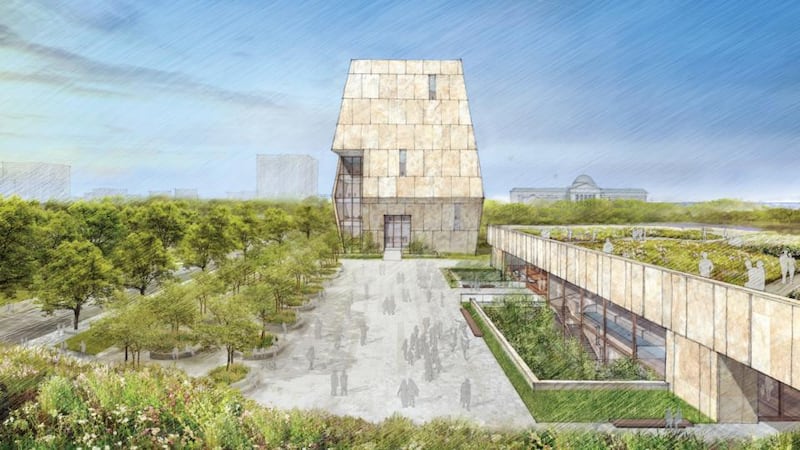On the northern outskirts of Austin, Texas, an imposing 1970s building towers over the sprawling campus of the city's university.
The Lyndon Baines Johnson Presidential Library and Museum is one of the city's top tourist attractions. The centre recounts the life of Lyndon Johnson, the Texas Democrat who became president by chance after John F Kennedy's assassination, in 1963. Housing more than 45 million documents and artefacts, the museum charts the life and times of the United States' 36th president and re-creates the politics and culture of the 1960s.
Presidential libraries are a uniquely American phenomenon. The first was founded by Franklin D Roosevelt, in 1939. While still in office he announced his intention to donate his personal and presidential papers to the federal government, and pledged part of his family estate in upstate New York for a site. In 1955 the United States Congress passed the Presidential Libraries Act, enshrining the system in statute.
Today 13 presidential libraries are dotted across the country. Most are in the relevant president's home state, from John F Kennedy's, in Boston, to William J Clinton's, in Little Rock, Arkansas. Presidents George Bush snr and jnr chose the Texas cities of College Station and Dallas, respectively. In a departure from tradition, Barack Obama announced that his presidential library would be fully digital; its website is part of the existing presidential-libraries system, but the Obama Foundation is also building the Obama Presidential Center, which it says will combine a presidential archive with community facilities. The Obamas unveiled the first designs for the $500 million complex earlier this year; it is due to open, on the south side of Chicago, in 2021.

Presidential libraries open up questions about how history is mediated and presented for posterity. Part public museums, part privately funded enterprises, most US presidential libraries were established through private foundations – often established by the president and his supporters – although they are managed by the federal government.
To this extent they have been criticised for inevitably presenting history from a specific vantage: that of the president. Richard Nixon's presidential library, in Yorba Linda, California, included a Watergate exhibit, approved by the president himself. In 2007 the library passed into the control of the US National Archives, and the exhibit was reconfigured, presenting a more balanced and critical representation of the scandal that brought Nixon down.
The LBJ Presidential Library, in Austin – Johnson was centrally involved in its commissioning, and his wife, "Lady Bird", retained an office there until shortly before her death, in 2007 – is less controversial, but it nonetheless gives a fascinating insight into the life and times of the US president, tracing his journey from rural Texas to the highest office in the land.
The exhibition shows the way his social-democratic vision was shaped by his early years as a teacher. From there it traces his path to the White House – among the artefacts on display is the missal on which he put his palm as he took the presidential oath alongside Jackie Kennedy, on Air Force One, after JFK's death.
Among the most interesting collections are hundreds of hours of recordings from the Oval Office, which throw a light on the event that was to overshadow his presidency: the Vietnam War. "We don't have any plan for victory . . . military or diplomatically," he says in slow, empty tones in one phone call to his defence secretary Robert McNamara on June 21st, 1965.
The exhibition reveals in painful detail Johnson’s awareness of the unfolding nightmare of Vietnam. But the exhibition also seeks to showcase his achievements: the enactment of the Civil Rights Act, and how he never stopped believing in his vision of the “Great Society”.
Mar-a-Lago, or one of his many golf clubs, could be a contender for the Trump library. More tricky, perhaps, will be how to curate his presidential tweets
All of this leads to an inevitable if somewhat disconcerting question: what might the Donald J Trump library look like?
There is no reason to believe that the 45th president of the United States won’t follow in the footsteps of his 14 predecessors. Given Trump’s fondness for brandishing his name on many of his buildings, he seems unlikely to shirk the opportunity to cement his legacy.
There will be no shortage of sites, either, given his real-estate interests. Although New York is the obvious choice, it is unclear how Democratic-leaning New Yorkers would feel about celebrating their local boy done good. Trump’s Mar-a-Lago estate, in Florida, or one of his many golf clubs, could also be a contender. More tricky, perhaps, will be how to curate his presidential tweets.
What is clear, however, is that a president who has railed against the mainstream media’s representation of his presidency is unlikely to give up the opportunity of putting his own stamp on the narrative of the Trump era. The Trump presidency may be the most divisive in living memory, but the battle to define its legacy is still to come.













